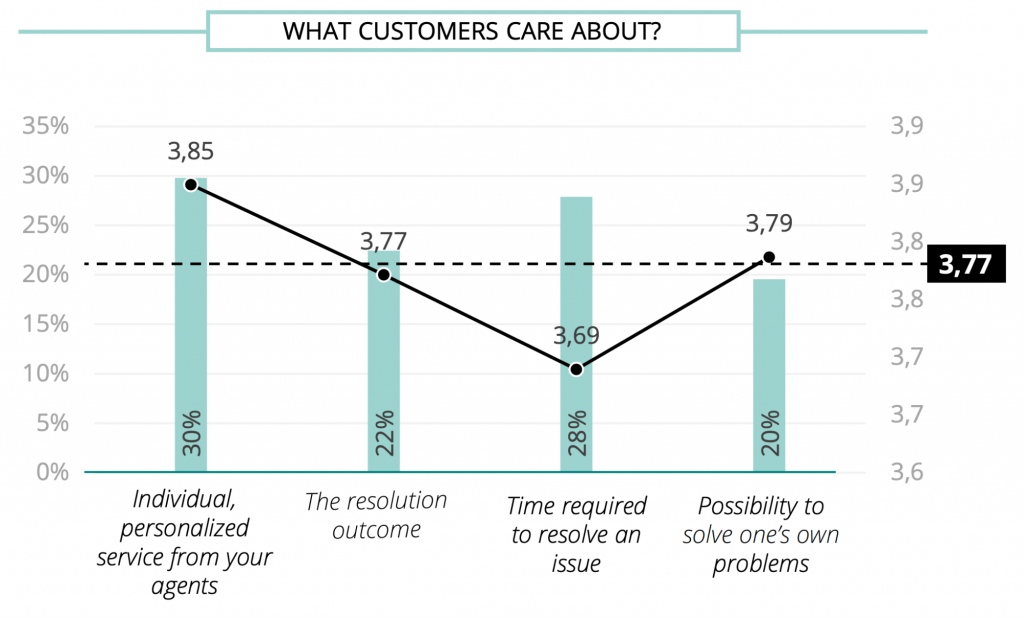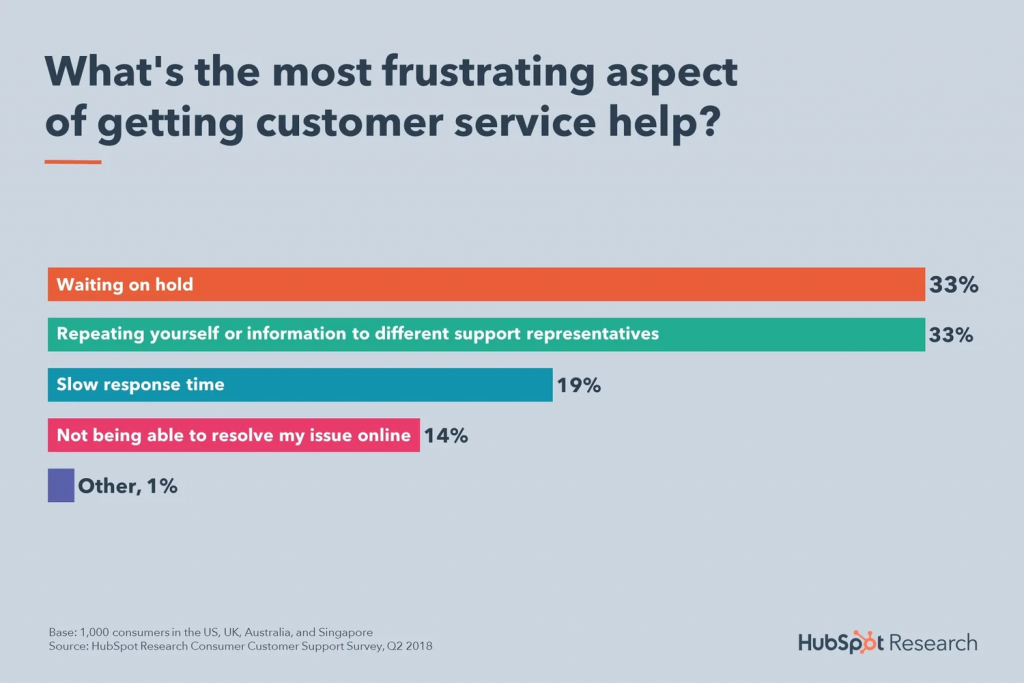Self-Service: A Cost-Effective Solution to Expand Customer Support
“People aren’t just purchasing items; they’re investing in experiences.”
This philosophy is central to today’s commerce world. From apparel to e-commerce, delivering an unforgettable experience has become the new battleground for businesses.
Understanding customer experience is like navigating a vast landscape with diverse terrains. To truly excel, companies must approach it from multiple angles. A pivotal step in this direction is ensuring customers can seamlessly and promptly address their concerns.
Exemplary customer support is multifaceted: it’s about timely reactions, forward-thinking representatives, valuable discounts, and more. Crucially, it involves empowering customers with the autonomy to troubleshoot and find solutions independently, whenever they choose.
Expanding Customer Support One of the challenges in expanding customer service is the potential surge in business expenses.
To meet increasing demands, training, technology, and tools must be precise. It’s essential to ensure every customer is acknowledged and their issues addressed promptly. Yet, simultaneously, businesses shouldn’t feel pressured to onboard a massive team of support agents.
Balancing quality support with financial sustainability is an intricate task. A practical initial step involves refining current operations and strategically investing in automation, ensuring the personal touch remains intact.
A strategic approach to enhance support is the integration of self-service.
By equipping customers with the necessary tools and resources to independently seek solutions, businesses can elevate their support levels without a significant increase in staff numbers.
Simply put, it’s about enabling customers to help themselves.
Self-service avenues, including knowledge bases, FAQs, chatbots, and step-by-step tutorials, provide round-the-clock assistance. This allows customers to retrieve information when they need it, bypassing the typical hurdles of direct support interactions.
Understanding Self-Service
Self-service centers around granting customers the autonomy to address their challenges whenever they see fit.
It offers an array of tools and resources, from knowledge bases and FAQs to chatbots and how-to guides. This method allows customers to uncover answers and solutions without the immediate intervention of customer support representatives.
The Value of Self-Service
Both customers and businesses gain immensely from self-service avenues.
From the customer’s viewpoint, self-service spells convenience. They have the freedom to seek answers and tackle issues autonomously and instantly, any time of the day or night. This autonomy grants them more control over their queries and eliminates the annoyance of prolonged waits.
For businesses, self-service streamlines operations, slashes support-related expenses, and diverts personnel to grapple with intricate issues. Additionally, it acts as a rich vein of data, enabling companies to fine-tune their understanding of consumer preferences.
In essence, self-service cultivates a scenario where both the consumer and the company benefit, elevating customer contentment while bolstering operational prowess.
Diving deeper into its multifaceted benefits:
Economical Upsides
Self-service channels shine in cost-effectiveness. They curtail the influx of routine support requests and diminish the requisite for a vast support crew, reaping substantial financial advantages in the long haul.
Always-On Assistance
Support agents have working hours; self-service doesn’t.
These tools stand at the ready 24/7, granting customers the luxury to seek aid whenever they deem fit. This aspect is particularly crucial for entities with a global reach or for those catering to customers with packed calendars.
Accelerated Solutions
With self-service in play, customers have the means to address concerns independently, often at a pace swifter than awaiting a human response. This expediency elevates customer delight.
Minimal Customer Strain
Self-service significantly trims down the effort customers need to invest in obtaining solutions. With intuitive interfaces and tools, hurdles in the quest for information are nearly non-existent.
Future-Proofing with Scalability
As businesses flourish, self-service tools effortlessly scale to cater to the burgeoning clientele. It’s a seamless support solution, in contrast to the complexities of inducting and prepping more support personnel.
Insights Galore
Platforms like chatbots or knowledge bases are goldmines of customer-centric data, shedding light on behavior, predilections, recurrent issues, and more. Such insights pave the way for continual refinement of business strategies.
Unwavering Consistency
Self-service mechanisms ensure a uniform knowledge dissemination. Knowledge management tools urge teams to harmonize data. Automated platforms, unlike human reps, guarantee a consistent response.
Alleviated Support Pressure
By addressing routine inquiries, self-service lightens the burden on support staff, freeing them to tackle nuanced challenges, thereby enhancing their job fulfillment and efficacy.
Round-the-Clock Access
With a non-stop operational mode, customers are never left in the lurch and can seek guidance beyond standard operating hours.
Refined User Experience
When executed adeptly, a self-service strategy amplifies the entire user journey, resonating with today’s clientele who prioritize self-reliance and expediency.
Examples of Self-Service Tools
There are several methods to swiftly enhance the ease and convenience of your customers’ lives.
Knowledge Base
A knowledge base serves as a comprehensive reservoir of information, acting as a valuable reference tool for individuals in search of specific answers or solutions. Typically, it encompasses a collection of articles, guides, FAQs, and various documents tailored to offer insights into specific subjects, products, or services.
The primary aim of knowledge bases is to facilitate easy navigation, enabling users to swiftly access the information they require. Whether it involves troubleshooting issues, acquiring proficiency in product usage, or grasping intricate concepts, a knowledge base offers a comprehensive resource.
Organizations employing these tools empower customers, employees, and support teams to independently access information at their convenience, thus minimizing the need for one-on-one assistance.
Imagine the luxury of no longer needing to repeatedly explain the same information to new hires. A knowledge base impeccably organizes all essential data, encompassing company policies, best practices, and onboarding materials. Company announcements, updates, and reports are centrally located, accessible to all employees whenever they need them.
In the context of customer interactions, gone are the days of enduring endless hold times or inundating inboxes with a barrage of emails seeking answers. Quick fixes, FAQs, or comprehensive guides are readily available within the knowledge base. Furthermore, it operates around the clock, allowing customers to resolve their issues promptly, even at the ungodly hour of 2 AM on a Saturday.
Interactive Tutorials and Guides
Interactive tutorials and guides provide comprehensive step-by-step guidance, transforming a customer or user from a state of uncertainty to one of confidence in no time.
These invaluable tools employ a combination of visuals, animations, and clear instructions to navigate users through various processes. Whether it’s introducing beginners to photo-editing software or guiding users through a complex SaaS tool, interactive tutorials excel at imparting knowledge effectively.
Their effectiveness lies in their ability to offer an engaging means of problem-solving and skill acquisition. Unlike traditional written instructions, interactive tutorials seamlessly integrate text with visuals, animations, and occasionally quizzes, creating an immersive learning experience. By catering to diverse learning styles, this multimedia approach ensures users can absorb information with maximum efficiency.

Chatbots
Chatbots represent another valuable option to explore when investing in self-service solutions, whether it involves addressing FAQs, delivering product details, or guiding users through troubleshooting procedures.
These computer programs are engineered to emulate human conversation and engagement with users. Leveraging artificial intelligence and natural language processing, chatbots possess the capability to comprehend and respond to textual or vocal inputs in a conversational manner.
They can seamlessly integrate into websites, messaging platforms, or other digital interfaces, offering an efficient avenue for customers to obtain answers to their inquiries, resolve issues, or access relevant information.
Chatbots boast a versatile range of capabilities, spanning from fielding frequently asked questions to aiding in product recommendations and even facilitating transactions.
Thanks to artificial intelligence, chatbots are adept at promptly responding to customers seeking assistance. Operating in real-time, they provide the convenience of on-demand support, ensuring customers can receive help whenever it suits them.
Chatbots adhere to predefined scripts and algorithms, ensuring consistency in their responses, and continuously learn from each interaction. This adaptive learning process enhances their effectiveness over time, making them increasingly valuable in assisting users.

When Self-Service Falls Short
Undoubtedly, self-service has its limitations when it comes to tackling more intricate customer issues, at least for now.
Considering this, it becomes imperative to offer customers a streamlined path to connect with human agents. This underscores the importance of providing a seamless transition between self-service and human support.
The crux of the matter revolves around two key principles: granting customers the independence to find answers autonomously and extending a helping hand when they require it.
By establishing easily accessible communication channels like live chat with a human agent, phone support, or email, you ensure that customers do not find themselves trapped in frustrating dead ends. Instead, they can effortlessly shift to human assistance, where trained experts can deliver tailored solutions and navigate the intricacies of their unique situations.
In today’s customer-centric business landscape, prioritizing a smooth transition to human support acknowledges consumer preferences, ultimately leading to heightened levels of customer satisfaction.
There are a couple of crucial considerations to bear in mind on this subject:
Efficient Self-Service Pathways
To begin with, self-service alternatives should be readily available and prominently featured for customers. This entails maintaining a user-friendly website or app interface, displaying conspicuous self-service links, and providing explicit guidance on harnessing self-help resources.
Gradual Unveiling of Support Options
Self-service tools should follow a progressive disclosure approach, beginning with fundamental FAQs and knowledge bases, and then presenting avenues for escalating to live chat, phone support, or email.

Incorporating Live Chat
Certain live chat tools offer the capability to smoothly transition conversations from automated chatbots to human agents as necessary. Customers should have the flexibility to request live assistance at any stage of their interaction with a chatbot.
Collecting User Information
It is beneficial to gather user data, including their interaction history, purchase history, and other relevant details. Sharing this data with human agents during the transition from self-service enables agents to grasp the context of the customer’s query and deliver a more tailored and personalized level of support.
Seamless Omnichannel Support
Leverage tools that empower customers to seamlessly transition between self-service and diverse support channels while retaining their data and context. This guarantees that customers are spared the need to redundantly provide information when transitioning from self-service to human support.
Feedback Mechanism
Gather customer feedback regarding their experience with self-service and the transition to human support. Utilize this feedback to iteratively enhance the process and pinpoint areas of concern.
Monitoring and Analytical Insights
Leverage analytics to monitor customer journeys and identify recurring patterns where customers frequently shift from self-service to human support. This data can serve as a foundation for enhancing self-service content and usability.
Your Turn to Shine
Think of customer experience as its own unique offering.
Building an unparalleled customer experience requires dedication. At the heart of this is ensuring customers can address their concerns smoothly and swiftly.
Stellar customer support isn’t just about quick replies, proactive representatives, or enticing offers. It’s about equipping customers to find their own solutions when they wish to. Yet, scaling such support without skyrocketing costs poses a challenge. This balancing act between excellence and efficiency is intricate. This is precisely where self-service steps in as a game-changer.
Self-service equips customers with tools to independently navigate challenges. Businesses can thus amplify their support reach without stretching their team. With resources like knowledge bases, FAQs, chatbots, and step-by-step guides readily available round the clock, self-service becomes more than just a tool; it becomes a cornerstone of a holistic customer service approach, aiming to elevate satisfaction while optimizing operations.









